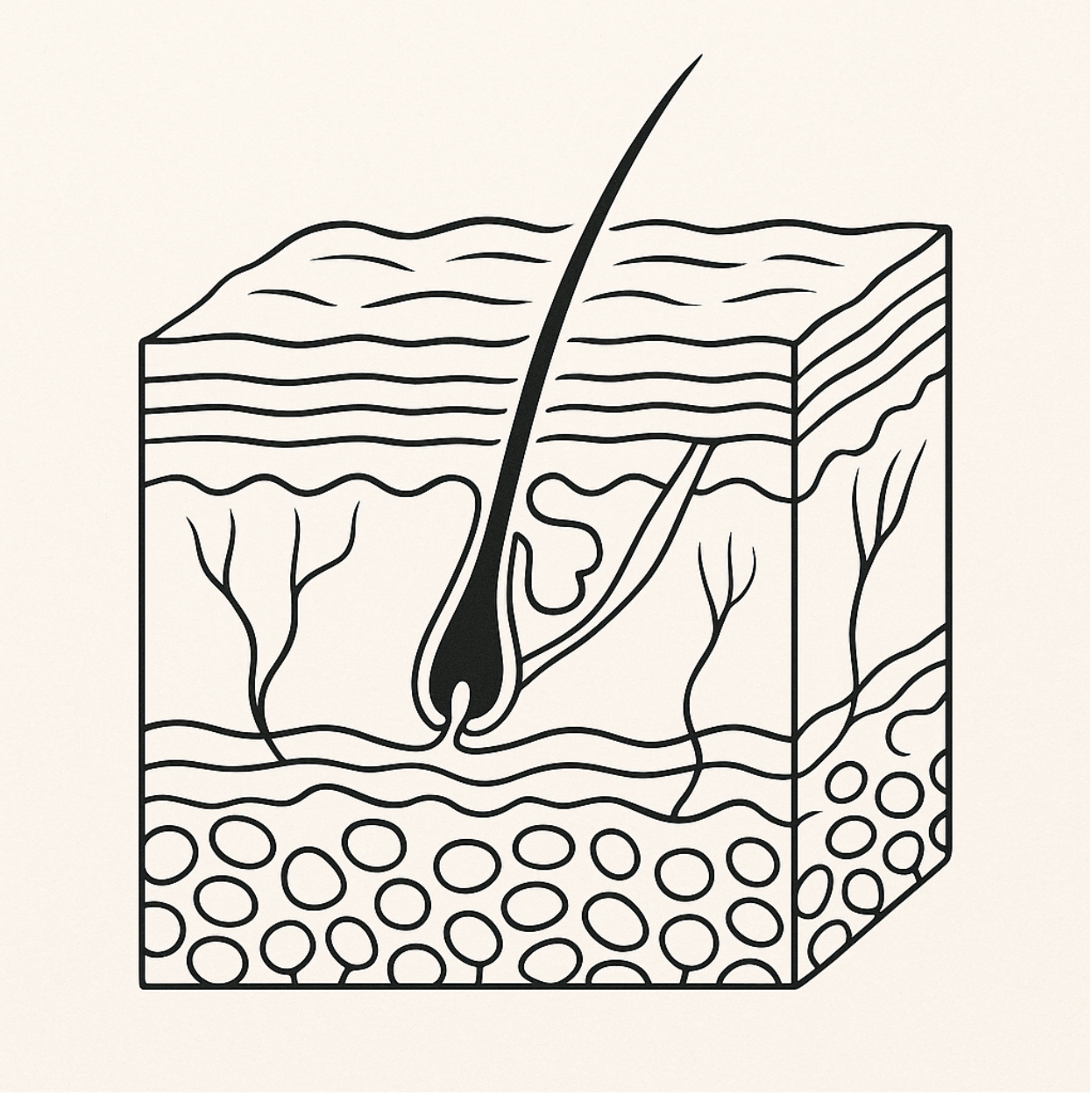
The Skin: Our Remarkable Organ
The skin is often described as the mirror of the soul: you turn pale with fear, blush with embarrassment, and glow when in love. Yet behind this visible play of emotions lies an impressive biological system. The skin is not only our largest organ, but also a vital shield that protects, regulates, and communicates with the outside world.
The Body’s Largest Organ
In adults, the skin covers an area of approximately 1.5 to 2 m² and, including the subcutaneous connective tissue, weighs an average of 15 to 20 kilograms. This makes it the body’s heaviest and most extensive organ. Its primary function is protection against external influences, but the skin also plays a crucial role in temperature regulation, immune processes, and sensory perception – all essential for overall skin health.
The Structure: Three Main Layers and Five Sublayers
The skin consists of three main layers – also called skin layers:
- Epidermis (outer layer)
Composed of five sublayers:- Stratum corneum (horny layer): dead, keratinised cells that prevent moisture loss.
- Stratum lucidum: present only in thick skin, such as palms and soles.
- Stratum granulosum: transitional layer where keratinocytes become keratinised.
- Stratum spinosum: strong due to cell bridges, but without cell division.
- Stratum basale: the basal layer where new cells are formed and melanocytes produce pigment.
-
Dermis (middle layer)
Rich in connective tissue, hair follicles, sebaceous and sweat glands, blood vessels, and nerve endings. -
Subcutis (subcutaneous fat layer)
Functions as a shock absorber, energy reservoir, and thermal insulator.
A remarkable process: the skin renews itself on average every 28 days. New cells migrate from the stratum basale to the surface, where they are eventually shed from the stratum corneum – a natural process of renewal that helps maintain healthy skin.
Pigment and Sunlight
Skin colour is determined by melanocytes in the basal layer. They produce melanin, the pigment that protects against UV radiation. There are two types: eumelanin (brown/black) and pheomelanin (red/yellow). Sun exposure stimulates melanin production: tanning is therefore the skin’s natural way of protecting itself against DNA damage.
Variations in Thickness and Skin Types
The thickness of the skin ranges from less than 0.1 mm (eyelids) to more than 4 mm (soles of the feet). Palms and soles also contain the additional stratum lucidum layer. In addition to anatomical differences, there are functional skin types – dry, oily, combination, sensitive, or mature – each requiring a different approach to skincare.
The Skin Microbiome
The skin is home to millions of microorganisms, collectively known as the skin microbiome. This ecosystem of bacteria, yeasts, and fungi helps keep the skin healthy and protects against harmful intruders. A disrupted microbiome can lead to conditions such as eczema or acne, highlighting the importance of maintaining a balanced skin flora for long-term skin health.
Why Conscious Skincare Matters
The skin is much more than an outer calling card. As our largest organ, it combines protection, sensory perception, immune functions, and regeneration. Because its layers constantly renew and work in harmony with the skin microbiome, this organ deserves the right care. With consistent skincare – from sun protection to hydration – you can keep your skin strong, healthy, and radiant.
That is why it is essential to choose products that are both clinically backed and responsibly formulated. The BAKR&BERG Skincare line was developed with this philosophy in mind: where beauty meets science. Discover the collection and shop your favourites for a healthy, radiant complexion.
Share

